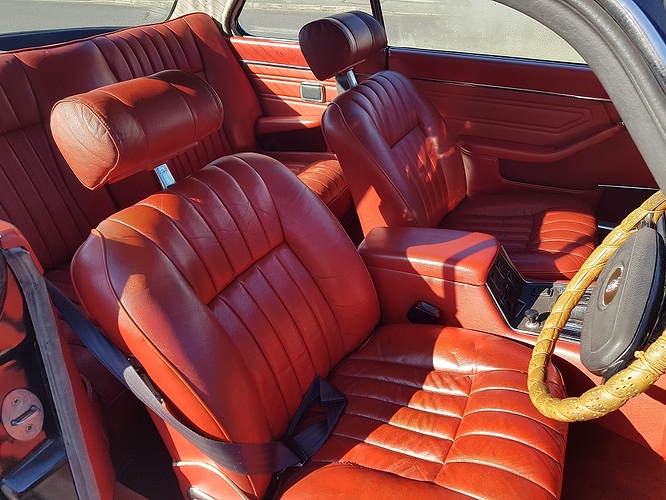Hi All,
I’ve been lurking here for a while so I thought it was about time I posted something.
A couple of months ago I bought a 1975 XJ4.2C, I’ve owned a lot of (mainly British) older cars over the years but this is my first Jag. I’ve always fancied an XJC and as prices seem to be on the up I thought I’d better grab one before they are out of my reach.
My plan is to slightly modify the car to make it more reliable and driveable, I’m going to convert to a manual gearbox, fuel injection and electronic ignition, and I want to look at what can be done to firm up the suspension and sharpen the steering. A more rorty exhaust note couldn’t hurt either. More immediately I need to adjust the side windows and replace some of the seals, and I want to get rid of the terrible aftermarket sunroof. I’ll get the bodywork sorted as time and funds allow and i’m toying with the idea of reinstating the vinyl roof, not sure on that yet…
I settled on this car because it appears to be pretty solid, there’s no rot that I can see in the usual spots like floors, sills and boot. There are some bubbles in the area where the rear quarters meet the sills and at the base of the c pillars, and no doubt I will uncover some horrors as I dig into it!
The car has been unused for quite some time but went through an MOT without much fuss. The seller put on a new stainless exhaust for me and a nice set of Kent alloys.
The photos flatter the car as the paint is actually a bit of a mess. Good from afar but far from good as they say. I don’t know what colour it was originally, there is some evidence in the boot that it may have been light blue or possibly lavender, but I like the black on red scheme so I’ll probably be keeping it.
The interior is generally good with just a bit of broken stitching on the driver’s seat base, there are no rips and the leather looks like it will respond well to feeding. It’l need new carpets and headlining however.
At some point the engine has been replaced with a unit from a Series 3 Daimler that is reputed to have done only about 30,000 miles, running on carbs.
My first couple of months have been difficult with the car breaking down on only my second short trip. This was quickly traced to a broken wire in the engine bay. Quickly fixed but one of the jobs on my list is to replace all the engine bay wiring as there are 45 years’ of blue plastic crimp connectors to deal with.
The next issue was water getting into the fuel tanks - a common problem I’m led to understand - but I’ve replaced the fuel filler seals and cleared the crud out of the drain channels so hopefully fixed now.
Once I was able to get some miles under my belt it became clear that there was an issue with the gearbox. When cold all was good, but after just a few miles it would intermittently make a terrible grinding noise, and then a few miles further on the engine would start to stall when pulling up at junctions or lights unless I shifted into neutral. I checked all the obvious stuff like fluid condition and level, kickdown and shifter adjustment, but I quickly exhausted my limited knowledge of auto gearboxes.
Since I wanted to do a manual conversion anyway the car in now up on ramps and the auto box has been banished to the corner of the garage. I should have the manual box installed in the next week or so, depending on how much time I get. I’ll post separately on how that goes.
Cheers
Darren


